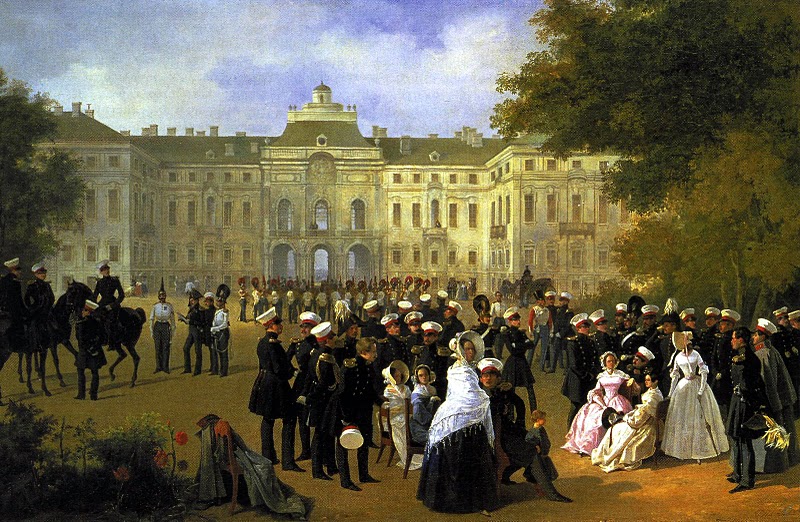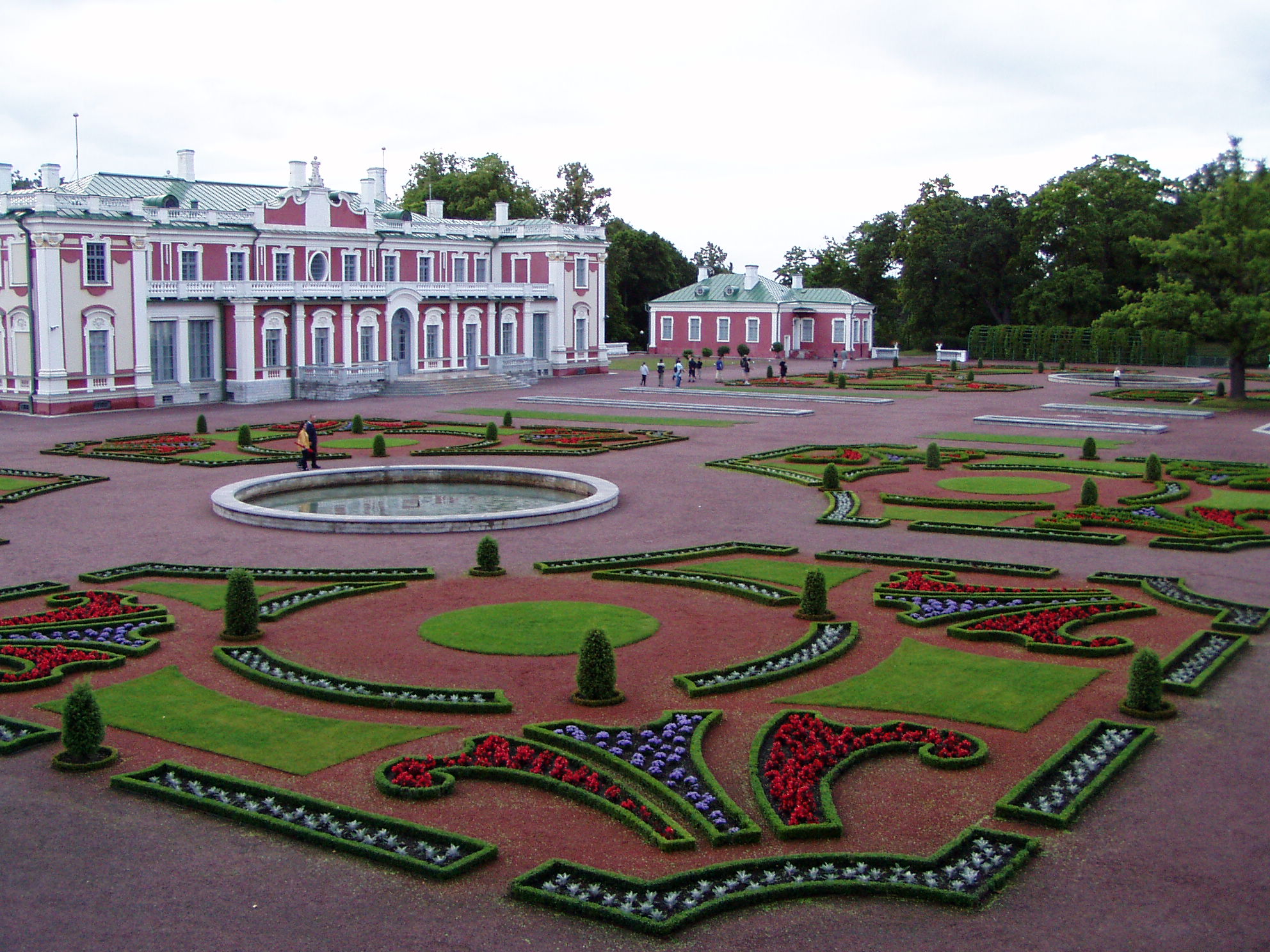|
Strelna
Strelna ( rus, Стре́льна, p=ˈstrʲelʲnə) is a municipal settlement in Petrodvortsovy District of the federal city of Saint Petersburg, Russia, about halfway between Saint Petersburg proper and Petergof, and overlooking the shore of the Gulf of Finland. Population: History Strelna was first mentioned in Cadastral surveying of Vodskaya pyatina in 1500, as the ''village of Strelna on Retse Strelne on the Sea'' in the churchyard Kipen Koporsky County. After Treaty of Stolbovo these lands were part of Sweden, and in 1630 in Strelna appears as a baronial estate of Swedish politician Johan Skytte. The estate had a marina, a water mill, a pond, a greenhouse and a small house church. Palace of Peter the Great Formerly a Swedish chancellor's estate, Strelna was chosen by Peter the Great as a place for his future summer house in 1714. Jean Baptiste Le Blond, famous for his work with André Le Nôtre at Versailles, was commissioned to prepare designs for a palace and ... [...More Info...] [...Related Items...] OR: [Wikipedia] [Google] [Baidu] |
Jean Baptiste Le Blond
Jean-Baptiste Alexandre Le Blond (1679 – 10 March 1719) was a French architect and garden designer who became the chief architect of Saint Petersburg in 1716. Career in France He was the son of Jean Le Blond, painter in ordinary to the king, a printseller on the Pont Saint-Michel, Paris, and his wife, Jeanne d'Eu. He studied architecture with his mother's brother Jean Girard, in the service of Philippe I, duc d'Orléans. Jacques-François Blondel implied that he had derived gardening expertise from André Le Nôtre, finding that Le Blond was :one of our Architects, who among us most knew how to profit from the precepts of the great Master... It must be agreed, however, that, in imitating them, it would be suitable to be provided with a certain intelligence Indeed, Le Blond was responsible for more than simply the engravings in Dezallier d'Argenville's seminal work on the principles of French formal garden design, ''La théorie et la pratique du jardinage'', 1709: according ... [...More Info...] [...Related Items...] OR: [Wikipedia] [Google] [Baidu] |
Administrative Divisions Of Saint Petersburg
The federal city of Saint Petersburg, Russia, is divided into eighteen ''rayony'' ("districts", russian: районы, singular: ''rayon''), which are in turn subdivided into municipal okrugs, municipal towns, and municipal settlements. Admiralteysky District Frunzensky District Kalininsky District Kirovsky District Kolpinsky District Krasnogvardeysky District Krasnoselsky District Kronshtadtsky District Kurortny District Moskovsky District Nevsky District Petrodvortsovy District Petrogradsky District Primorsky District Pushkinsky District Tsentralny District Vasileostrovsky District Vyborgsky District References Notes Sources * See also *Saint Petersburg City Administration {{Saint Petersburg Saint Petersburg Saint Petersburg ( rus, links=no, Санкт-Петербург, a=Ru-Sankt Peterburg Leningrad Petrograd Piter.ogg, r=Sankt-Peterburg, p=ˈsankt pʲɪtʲɪrˈburk), formerly known as Petrograd (1914–1924 ... [...More Info...] [...Related Items...] OR: [Wikipedia] [Google] [Baidu] |
Petrodvortsovy District
Petrodvortsovy District (russian: Петродворцо́вый райо́н) is a district of the federal city of St. Petersburg, Russia. As of the 2010 Census, its population: was 128,156; up from 77,542 recorded in the 2002 Census. Municipal divisions Petrodvortsovy District comprises two municipal towns ( Lomonosov and Petergof) and one municipal settlement (Strelna Strelna ( rus, Стре́льна, p=ˈstrʲelʲnə) is a municipal settlement in Petrodvortsovy District of the federal city of Saint Petersburg, Russia, about halfway between Saint Petersburg proper and Petergof, and overlooking the shore ...).Law #411-68 References Notes Sources * {{Use mdy dates, date=June 2015 ... [...More Info...] [...Related Items...] OR: [Wikipedia] [Google] [Baidu] |
Niccolo Michetti
Nicola Michetti, also known as Niccolo or Niccolò (circa 7 December 1675 in Venice – 12 November 1758 in Rome) was an Italian architect, active in a late- Baroque style in mostly Rome, Italy and St Petersburg, Russia. While born in Venice, Nicola worked for years in Rome under Carlo Fontana, including as a foreman (Capomaestro) in the reconstruction of the Basilica of Santi Apostoli. Nicola independently submitted a proposal for the Trevi Fountain (1704), however, the winning commission went to Salvi. Nicola performed smaller architectural projects in Rome, including the altar and the architecture of the ''Sacripante chapel'' (1712) in Sant'Ignazio. In 1715, he submitted a losing design against competitors like Juvarra, Canevari and others to be able to design a new sacristy of St. Peter's Basilica. That same year, he designed and help build a chapel of the church of Santa Maria in Transpontina and for the ''Rospigliosi chapel'' in the church of San Francesco a Ripa (wh ... [...More Info...] [...Related Items...] OR: [Wikipedia] [Google] [Baidu] |
Grand Duke Konstantin Pavlovich Of Russia
Konstantin Pavlovich (russian: Константи́н Па́влович; ) was a grand duke of Russia and the second son of Emperor Paul I and Sophie Dorothea of Württemberg. He was the heir-presumptive for most of his elder brother Alexander I's reign, but had secretly renounced his claim to the throne in 1823. For 25 days after the death of Alexander I, from 19 November (O.S.)/1 December 1825 to 14 December (O.S.)/26 December 1825 he was known as ''His Imperial Majesty Konstantin I Emperor and Sovereign of Russia'', although he never reigned and never acceded to the throne. His younger brother Nicholas became Tsar in 1825. The succession controversy became the pretext of the Decembrist revolt. Konstantin was known to eschew court etiquette and to take frequent stands against the wishes of his brother Alexander I, for which he is remembered fondly in Russia, but in his capacity as the governor of Poland he is remembered as a hated ruler. Early life Konstantin was ... [...More Info...] [...Related Items...] OR: [Wikipedia] [Google] [Baidu] |
Konstantin Palace
The first name Konstantin () is a derivation from the Latin name '' Constantinus'' ( Constantine) in some European languages, such as Russian and German. As a Christian given name, it refers to the memory of the Roman emperor Constantine the Great. A number of notable persons in the Byzantine Empire, and (via mediation by the Christian Eastern Orthodox Church) in Russian history and earlier East Slavic history are often referred to by this name. "Konstantin" means "firm, constant". There is a number of variations of the name throughout European cultures: * Константин (Konstantin) in Russian (diminutive Костя/Kostya), Bulgarian (diminutives Косьо/Kosyo, Коце/Kotse) and Serbian * Костянтин (Kostiantyn) in Ukrainian (diminutive Костя/Kostya) * Канстанцін (Kanstantsin) in Belarusian * Konstantinas in Lithuanian * Konstantīns in Latvian * Konstanty in Polish (diminutive Kostek) * Constantin in Romanian (diminutive Costel), Frenc ... [...More Info...] [...Related Items...] OR: [Wikipedia] [Google] [Baidu] |
Tsarskoye Selo
Tsarskoye Selo ( rus, Ца́рское Село́, p=ˈtsarskəɪ sʲɪˈlo, a=Ru_Tsarskoye_Selo.ogg, "Tsar's Village") was the town containing a former residence of the Russian imperial family and visiting nobility, located south from the center of Saint Petersburg. The residence now forms part of the town of Pushkin. Tsarskoye Selo forms one of the World Heritage Site Saint Petersburg and Related Groups of Monuments. The town bore the name Tsarskoe Selo until 1918, Detskoe Selo ( ru , Детское Село , translation = Children's Village) between in the years 1918–1937, then Pushkin ( ru , Пушкин) from 1937 onwards. History The area of Tsarskoye Selo, once part of Swedish Ingria, first became a Russian royal/imperial residence in the early 18th century as an estate of the Empress-consort Catherine (later Empress-regnant as Catherine I, ), from whom the Catherine Palace takes its name. The Alexander Palace (built from 1792 onwards) originated as the h ... [...More Info...] [...Related Items...] OR: [Wikipedia] [Google] [Baidu] |
Bartolomeo Rastrelli
Francesco Bartolomeo Rastrelli (russian: Франче́ско Бартоломе́о (Варфоломе́й Варфоломе́евич) Растре́лли; 1700 in Paris, Kingdom of France – 29 April 1771 in Saint Petersburg, Russian Empire) was an Italian architect who worked mainly in Russia. He developed an easily recognizable style of Late Baroque, both sumptuous and majestic. His major works, including the Winter Palace in Saint Petersburg and the Catherine Palace in Tsarskoye Selo, are famed for extravagant luxury and opulence of decoration. Biography Rastrelli was born in 1700 in Paris, where his father, Carlo Bartolomeo Rastrelli (1675–1744), a Florentine sculptor and architect who had trained in Rome, was active. Nothing is known about Francesco's Parisian years, but it seems certain that the young man trained and worked in his father's workshop. In 1716, Bartolomeo moved to Saint Petersburg, which became a new Russian capital just a four years before, accomp ... [...More Info...] [...Related Items...] OR: [Wikipedia] [Google] [Baidu] |
Elizabeth Of Russia
Elizabeth Petrovna (russian: Елизаве́та (Елисаве́та) Петро́вна) (), also known as Yelisaveta or Elizaveta, reigned as Empress of Russia from 1741 until her death in 1762. She remains one of the most popular Russian monarchs because of her decision not to execute a single person during her reign, her numerous construction projects, and her strong opposition to Prussian policies. The second-eldest daughter of Tsar Peter the Great (), Elizabeth lived through the confused successions of her father's descendants following her half-brother Alexei Petrovich, Tsarevich of Russia, Alexei's death in 1718. The throne first passed to her mother Catherine I of Russia (), then to her nephew Peter II of Russia, Peter II, who died in 1730 and was succeeded by Elizabeth's first cousin Anna of Russia, Anna. After the brief rule of Anna's infant great-nephew, Ivan VI of Russia, Ivan VI, Elizabeth seized the throne with the military's support and declared her own neph ... [...More Info...] [...Related Items...] OR: [Wikipedia] [Google] [Baidu] |
Carlo Fontana
Carlo Fontana (1634 or 1638–1714) was an Italian architect originating from today's Canton Ticino, who was in part responsible for the classicizing direction taken by Late Baroque Roman architecture. Biography There seems to be no proof that he belonged to the family of famous architects of the same name, which included Domenico Fontana. Born in Brusato, near Como (now part of the town of Novazzano in Canton Ticino, Switzerland), Fontana went to Rome before 1655. He became a draughtsman for the architectural plans of Pietro da Cortona, Carlo Rainaldi, and Gian Lorenzo Bernini. Bernini employed him for nearly a decade in diverse projects. His first independent project may be the church of San Biagio in Campitelli, completed by 1665. His façade at San Marcello al Corso (1682–83) is described as one of his most successful works. For his patron, Innocent XII, he erected the immense building of the Istituto Apostolico San Michele at Ripa Grande, organized around its c ... [...More Info...] [...Related Items...] OR: [Wikipedia] [Google] [Baidu] |
Baroque Garden
The Baroque garden was a style of garden based upon symmetry and the principle of imposing order on nature. The style originated in the late-16th century in Italy, in the gardens of the Vatican and the Villa Borghese gardens in Rome and in the gardens of the Villa d'Este in Tivoli, and then spread to France, where it became known as the ''jardin à la française'' or French formal garden. The grandest example is found in the Gardens of Versailles designed during the 17th century by the landscape architect André Le Nôtre for Louis XIV. In the 18th century, in imitation of Versailles, very ornate Baroque gardens were built in other parts of Europe, including Germany, Austria, Spain, and in Saint-Petersburg, Russia. In the mid-18th century the style was replaced by the less geometric and more natural English landscape garden. Characteristics Baroque gardens were intended to illustrate the mastery of man over nature. They were often designed to be seen from above and from a ... [...More Info...] [...Related Items...] OR: [Wikipedia] [Google] [Baidu] |


.jpg)
.jpg)

.jpg)

